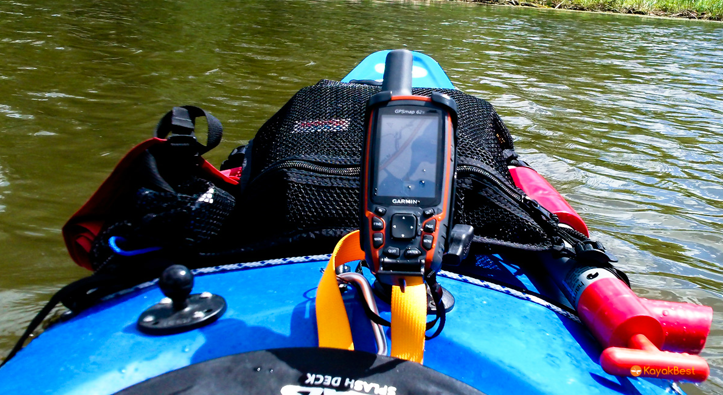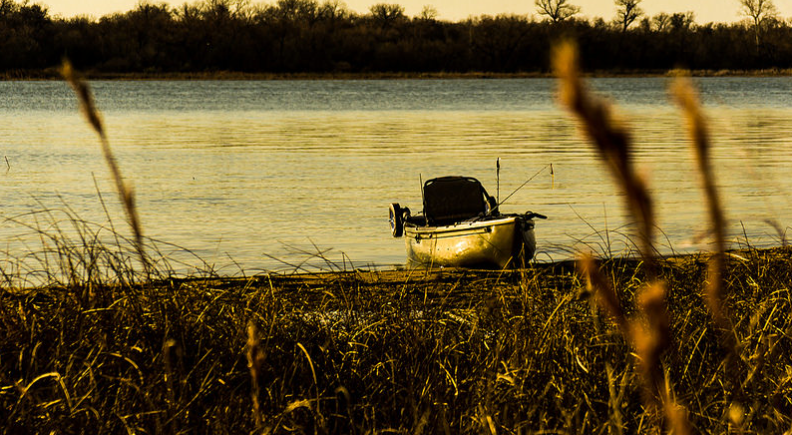Fishing, Hunting and Camping
Tips, articles and reviews by people like you.
Kayaking for Beginners
Kayaking is a sport that’s easy for beginners to learn. It’s simple enough for most beginners to catch on to fairly quickly. Within only a few hours, you can be enjoying your time paddling along. There are multiple kinds of kayaking, too, ranging from flat water kayaking to sea kayaking and even whitewater kayaking.
All the Information You Need to Know to Get Started with Kayaking

Whether you plan to go on a local kayaking trip or have an excursion planned to some of the most beautiful places in the world, such as kayak tours in Lagos, you’ll need to have basic kayaking skills before you start out on a kayaking adventure.
We’re launching a kayaking for beginners, these are the top ten tips boaters should have before they go out on the water.
1 – Sign Up for Lessons
First, it’s important to find a quality instructor and sign yourself up for kayaking lessons. You may not think that you need these. After all, how difficult can it be to paddle a kayak?
It isn’t rocket science, but you could find yourself stuck paddling in circles at first if you don’t have correct coaching. Lessons will help prevent you from losing time and help you with things like learning how to paddle and how to recover from tipping over.
The lessons aren’t even all that expensive. There are online search functions that can help you find locations near you, with all the details about lessons for beginners and what they include, how much they cost, and more.
2 – Dress for the Water Temperature, Not the Ambient Temperature
You may be tempted to light summer clothing because it’s a warm, sunny day. However, the temperature of the river or stream could be much colder.
Be sure that you select clothing that is designed for the water temperature, not the temperature of the air. If you fall in the water, you’ll be quite happy that you opted to wear a wet suit, kayaking gloves, and waterproof clothing, instead of lighter clothing.
3 – Select the Correct Boat

There are numerous types of kayaks on the market, with kayaks available for different ages, body types, and types of water.
You may opt to get started in recreational kayak that’s designed for the exact type of water that you’ll be going out on. If you’ll be paddling on a lake, you’ll likely want to think about renting a kayak that’s designed for flat water. Kayaks that you can sit on top of tend to be a really good option for beginners, as they’re quite easy to paddle and very stable.
4 – Never Kayak Without a Flotation Aid
It’s important to wear a flotation device no matter whether you’re just starting out or you’ve been kayaking for years.
You’ll read this in any type of beginners guide for kayakers. These buoyancy aids are similar to life jackets, but they provide you with much more movement around your neck and arms, so they’re better designed for kayaks. You never know when you could wind up having issues, even if you’re a strong swimmer.
Kayaking schools will always provide you with a buoyancy aid, but if you’re paddling on your own, we suggest that you supply your own or consider renting one from a local center.
5 – Sit Correctly in the Kayak
Taking the time to learn to sit correctly in a kayak will help make it much easier when you begin paddling. It’s true that your kayak may have a very comfortable backrest, but don’t use it as an excuse to slouch. Do your best to sit up as straight as possible, with your lower back and buttocks at 90 degree angles to each other.
There are foot pegs on both sides of your kayak. Your feet go here. Point your toes outward, with your heels pointed towards the center. Bend your knees up and out, and allow your thighs to make contact with the braces designed for them.
6 – Take Time to Hold the Paddle Correctly
It may seem simple, but it’s actually vitally important to learn to hold your paddle before going out on a kayak. An instructor will be happy to work with you to teach you correct paddle technique and form, so that you’re holding the paddle in both hands, at the correct angle, and putting it in the water correctly. Using the paddle correctly will help ensure that you can move through the water in the direction that you want to go, at the speed that you’d like to go.
7 – Always Pack Extra Clothing
This is another simple fact that’s easy to forget about. Always make sure to bring extra clothes, even if you don’t think you’ll get wet. You may find that you’re quite grateful for having those clothes stashed away.
8 – Learn How to Rescue Others, as Well as Yourself
The first rule is knowing how to care for yourself. You may not capsize on your first, or even second, trip out – but it’s still good to know what to do. Be sure to stay with your kayak if it capsizes. Take the time to go through several capsize drills with your teacher. They’ll help you to learn how to get back in your boat after things go wrong.
9 – People Are More Important Than Things
It can seem simple, but often when someone panics, it’s easy to forget to keep one another safe, and that people are most important. It really doesn’t matter if you lose a paddle, items off your boat, or the boat itself. Keep your paddlers safe, and remember that boats can be replaced. People, on the other hand, cannot.
10 – Don’t Kayak Alone
One of the most important things for new kayakers to learn is how important it is not to go out on their own. There’s never good weather or good timing to hit the water alone, no matter how experienced you are. Instead, make sure that you always go out with a buddy, so that you’ll have someone to help you out if you get into a tough situation.
Kayak Fishing Checklist
 Photo by: Michael Whitacre
Photo by: Michael Whitacre
Are you new or thinking about getting into Kayak fishing? If so, there are a couple of things to think about and a few basic items you will need. The below list is a Kayak fishing checklist. It is a good idea to print out a list for quick reference of things you don’t want to forget. We have all had that “oh crap” feeling when we are out and realize we forgot something! Don’t be that person…
Tip: if you store and load your items the same way every time, they are easier to track and makes running through your checklist much quicker.
Kayak Fishing Checklist
Kayak of course
We are not going to spend a lot of time on this one. It is pretty obvious that you will have your kayak but you would be surprised… I’m assuming you already have one. Just make sure it is loaded before pulling out lol.
Paddle
You paddle is another pretty obvious item but this one can get left behind a little easier. We suggest a lightweight paddle that has a way to attach it to your Kayak for transport. Remember, the best thing you can learn is to set yourself up for success and make travel/preparing as easy as possible.
Safety Gear
You would be surprised on how many people do not pack the correct safety gear. It is not only irresponsible for you, it also would affect you family if you actually needs it.
- PFD (personal floatation device)
- A emergency whistle or airhorn
- Sun block
- Something hunter orange like a hat (in case you need to be spotted)
- Headlight if you will be fishing at night
- Knife
- Paracord, they make knives and bracelets made with paracord. Search for survival bracelets or knives.
- If possible and you have room somewhere, it is advised to take a small first aid kit
Portable GPS
 Photo by: kayakbest.com
Photo by: kayakbest.com
Many people do not think about using GPS while out kayaking but it really is a smart idea. You may think you know your local waters but they can serve couple ways. 1. of course is to know where you are. 2. You can mark honey holes or a turnoff you may not have time to explore but may want to in the future. 3. as a safety device so you can let someone know your exact location if you get into trouble. KayakBest has a good list of the top 5 GPS systems you can find here.
Tackle and Storage
So you will be in a Kayak with limited space, where do you keep your tackle, power bars and water? You want something easy to store and in the limited space you have. This of course depends on the type of fishing your doing.
Engel cooler makes a nice device that has multiple uses. It is a live well if you are using live bait or it can double as a air tight cooler for water and food. Did you catch it was air tight? The lid locks tightly so if you do capsize and end up dumping it, the cooler stays shut and protects everything in it. Great place to put your phone!
If you don’t want to put your money into one of those, I have two words for you. Milk crate… I have seen many people use these and they make an awesome storage spot. Easy to store and think of how much stuff it can hold. No worries if you have a small tackle box you want to take.
Lastly, think clothing. A cheap fishing vest or cargo pants give you a lot of room to keep lures, etc.
Camera
A camera is a must when fishing these days. When fishing by Kayak, using your phone camera is not the best choice. I always suggest always keeping them protected. We suggest something like a GoPro in a waterproof case. You could attach it to your hat or arm band to get some pretty cool shots.
Fishing License
Seems like a no brainer but make sure you have it on you. We also suggest laminating it as well since you will be on the water. Keeping it along with your wallet in something like the cooler above is recommended.
Water/Snacks
Pack plenty of water along with things like power bars. You will be doing a lot of rowing in the heat. You may be able to get away with a camelbak but a gallon water jug will be just fine (if you have the room).
Proper Attire/Weather Check
Check the weather, always dress for the elements. Remember that you will be doing a lot of rowing. Always wear a hat, wear plenty of sun screen (take extra with you) and wear polarized sunglasses. Using correct shoes is also important. Selecting the best shoes for kayaking can make your trip much more comfortable.
Lastly
Though you may have other things to add to your list, this is a good starting point. Just like everything else in life, you need to tailor the list to your needs. It’s a good idea to make your list, print it out. Laminate it and keep it with your gear.
I also want to stress that coming up with a packing and travel system will save you a ton of headaches. That way, it is always the same, you know where everything is and you will not lose things when your in a hurry.




